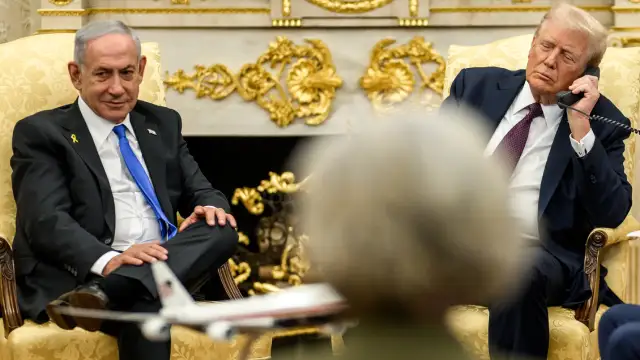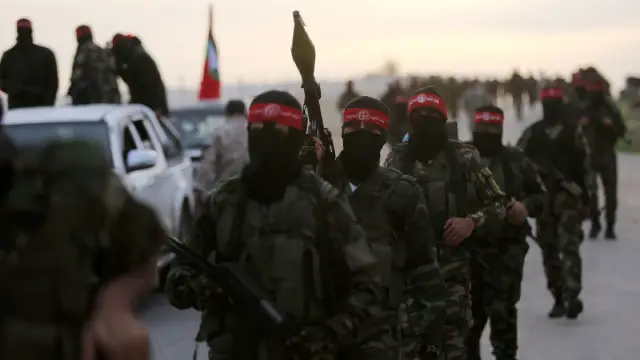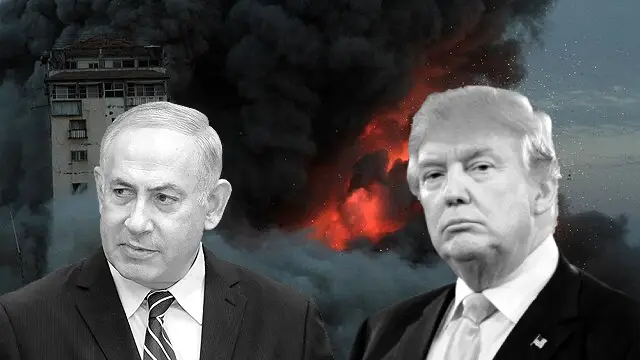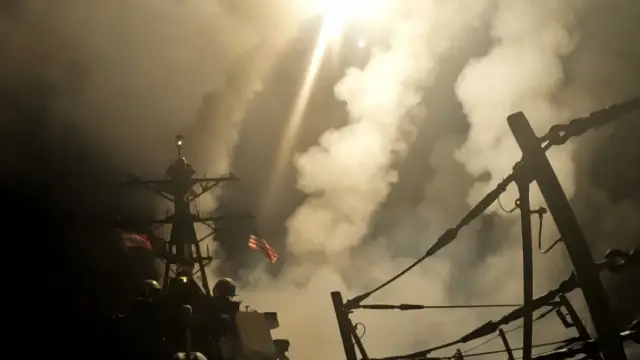When Donald Trump welcomed Benjamin Netanyahu to the White House on Monday, September 29th, the world expected little from their meeting. Mr Trump, driven by his desire to win the Nobel Peace Prize—for which Mr Netanyahu has recommended him—shows desperation in pushing his so-called Gaza peace plan. The Gaza peace plan, which Mr Trump had earlier proposed to Hamas, has been shared with Mr Netanyahu officially.
The US government has proposed a lot of options in Mr Trump’s Gaza peace plan, which limit Israeli control over the besieged territory. However, the plan appears as an eloquent colonial blueprint that the former real estate tycoon wants to use for profiteering.
Nevertheless, the US has pushed the ball into Mr Netanyahu’s court. Unless Israel agrees to it, the US is in no position to force Tel Aviv. Any such scope appears bleak.
President Trump Participates in a Press Conference with the Prime Minister of the State of Israel https://t.co/Gazc335nGb
— The White House (@WhiteHouse) September 29, 2025
Days earlier, Israel’s prime minister had addressed the United Nations General Assembly. The prime minister vowed to continue bombing Gaza. He vowed to adhere to no peaceful solution but the extermination of Palestinians, whom he labelled as Hamas.
Mr Netanyahu said all these after the UN categorised Israel’s aggression on Gaza as an act of genocide.
Yet, Mr Trump relies on Mr Netanyahu and Israel to see his proposed Gaza peace plan work.
Meanwhile, Mr Trump’s meeting with Mr Netanyahu took place days after the US president declared that he wouldn’t allow Tel Aviv to annex any territory in the West Bank.
During the meeting, Mr Trump hosted a trilateral phone call with Qatari Prime Minister Mohammed bin Abdulrahman bin Jassim Al Thani.
Gaza’s future: Deradicalisation or dispossession?
Mr Trump’s Gaza peace plan rests on a simple premise. Gaza must become, according to the White House, “a deradicalised terror-free zone that does not pose a threat” to its neighbours.
The Trump administration has adopted Israel’s narrative wholesale.
For it, Gaza is the source of terrorism.
Never mind that the world has watched Tel Aviv commit what the UN officially terms genocide, broadcast live for two years.
Never mind that Israel has even bombed Qatar, targeting mediators and Hamas representatives during peace negotiations.
The plan builds on discussions the two leaders held in January 2025.
Mr Trump proposed redeveloping Gaza with foreign real estate companies. The scenic beachside area has caught investors’ eyes.
“Gaza will be redeveloped for the benefit of the people of Gaza, who have suffered more than enough,” the White House announced on X.
— The White House (@WhiteHouse) September 29, 2025
The provisions of Mr Trump’s Gaza peace plan are sweeping.
If both sides accept the proposal, the conflict ends immediately, the plan says.
Israeli forces must withdraw to the agreed lines, the plan said, without categorically mentioning where those lines are.
According to the plan, all military operations cease within 72 hours of Israel’s public acceptance.
Prisoners held by Hamas return—alive and deceased—within three days of Israel’s acceptance.
Israel then releases 250 life-sentence prisoners plus 1,700 Gazans detained after October 7th 2023. This includes all women and children.
For every Israeli hostage’s remains released, Israel returns the remains of 15 deceased Gazans, Mr Trump’s Gaza peace plan states.
It mentions that Hamas members who commit to peaceful coexistence receive amnesty. They can live in Gaza.
Those Hamas members wishing to leave Gaza get safe passage to receiving countries, the plan proposes. This goes against what Mr Netanyahu wants—total annihilation.
The plan proposes that full aid flows immediately into the strip. Water, electricity, and sewage systems receive rehabilitation.
While it mentions that hospitals and bakeries will reopen, it provides no proposal on who will rebuild them. The plan says that equipment will arrive to clear rubble and open roads.
Trump and Blair: New Gaza’s architects
Governance arrangements reveal the plan’s true character.
The strip will operate under “temporary transitional governance” by a technocratic Palestinian committee, Mr Trump’s Gaza peace plan asserts.
It claims that this body delivers public services to the citizens.
It will run municipalities in the Gaza Strip. Its members will include qualified Palestinians and international experts.
However, the oversight belongs elsewhere.
A new international body called the “Board of Peace” will supervise everything.
Mr Trump will head and chair this board, he proposed.
Its members include former Prime Minister Tony Blair.
Mr Blair faced accusations of war crimes for attacking Iraq as the US’s junior partner in 2004. Now he is crowned as an architect of peace.
Mr Trump’s Gaza peace plan proposes that this body controls funding. It sets frameworks. It determines when the Palestinian Authority—after completing reforms outlined in Mr Trump’s 2020 peace plan and the Saudi-French proposal—can take back control.
The board will convene experts who have built “thriving modern miracle cities in the Middle East”.
These specialists will create an economic development plan. This announcement comes at a time when the US president’s real estate business is expanding its footprint in Saudi Arabia and the UAE.
It becomes easier to predict which expert Mr Trump is referring to when mentioning developing “miracle cities” in the region.
Mr Trump also proposes in the Gaza peace plan that a special economic zone will emerge with preferred tariffs. He claimed, investment proposals from international groups will receive consideration.
While the US president claims that these will create jobs, opportunity and hope, he didn’t mention for whom.
After receiving flak over his previous comment on relocating the Gaza population, Mr Trump has retreated.
No one faces forced removal from Gaza, his proposal claims.
However, it comes with a twist. Those wishing to leave can do so, the plan says. They can return, it adds, but doesn’t mention how.
But the White House encourages people to stay. To “build a better Gaza”, the president claimed.
Demilitarisation scheme
Hamas and other factions must abandon governance entirely, Mr Trump’s Gaza peace plan demands.
It demands that the resistance’s military infrastructure disappear. Tunnels collapse. Weapon production facilities cease. Demilitarisation proceeds under independent monitors. Weapons go permanently beyond use through decommissioning. An internationally funded buyback and reintegration programme follows. Regional partners guarantee Hamas’s compliance. They ensure “New Gaza” poses no threat.
Yet, there are no similar proposals regarding Israel, whose weapons have terrorised the people of West Asia across nations. There is no firman for the demilitarisation of Israel.
Moreover, under the guise of stabilising and securing Gaza, Mr Trump lays down a plan to turn it into a colonised landscape.
International forces to control Gaza
Mr Trump’s Gaza peace plan says the US will work with Arab and international partners to deploy a temporary International Stabilisation Force (ISF).
The ISF trains vetted Palestinian police forces. Jordan and Egypt—with “extensive experience”—provide consultation.
This force becomes the long-term internal security solution.
It secures borders with Israel and Egypt alongside trained Palestinian police.
According to the plan, munitions cannot enter Gaza. Goods flow freely for reconstruction, it asserts.
It, however, denies Tel Aviv any opportunity to control Gaza.
Israel will not occupy or annex Gaza, the plan states.
As the ISF establishes control, the Israel Defense Forces (IDF) withdraw.
Standards, milestones, and timeframes link to the demilitarisation of Gaza. The IDF hands territory progressively to the ISF. Complete withdrawal follows—except for a security perimeter.
Now, this security perimeter, which the plan says “will remain until Gaza is properly secure from any resurgent terror threat”, is not specified.
The plan highlights that the IDF and the ISF will redraw the line whimsically.
If Hamas rejects or delays, the plan proceeds anyway in terror-free areas.
An interfaith dialogue process launches, the plan says. It emphasises tolerance and peaceful coexistence. The goal, the White House claims, is to change mindsets and narratives among Palestinians and Israelis.
Statehood remains conditional
The final provisions promise statehood—eventually.
When Gaza’s redevelopment advances and the Palestinian Authority faithfully carries out reforms, conditions may exist for “a credible pathway to Palestinian self-determination and statehood”.
The US recognises this as the Palestinian people’s aspiration.
A dialogue between Israel and the Palestinians will establish a political horizon, the plan claims. This raises serious questions as the Israelis refuse any political dialogue with the resistance.
Hamas remains sceptical
Senior Hamas official Mahmoud Mardawi said, “Trump’s plan has not reached us or any Palestinian party so far, and we have not reviewed it. Its clauses, however, are close to the Israeli vision.”
Rejecting the notion that the resistance is a threat, the official has said, “The weapons of the resistance have never been used to aggress against anyone; their purpose is freedom and independence.”
“What happened was an attempt to stifle the international momentum and the growing recognition of the Palestinian state. The provisions announced in Trump’s plan are vague and lack guarantees,” Mr Mardawi added.
“We will not accept any proposal that does not include the right of the Palestinian people to self-determination and protection from massacres,” the Hamas official asserted.
Hamas’s initial reaction raises questions about Mr Trump’s Gaza peace plan’s future.
Islamic Jihad questions Trump’s Gaza peace plan
“What was announced in the press conference between Trump and Netanyahu is a US-Israeli agreement, and it is an expression of Israel’s full position, and it is a recipe for the continuation of aggression against the Palestinian people,” Ziyad al-Nakhaleh, secretary-general of the Palestinian Islamic Jihad Movement, said.
“With this, Israel is trying to impose through the US what it could not achieve through war,” the leader said.
“Therefore, we consider the US-Israeli announcement a recipe for igniting the region,” he added.
Renamed colonial project
The statement reveals fundamental problems.
Palestinians receive no right to peace on their terms.
Terms come from Washington.
Governance falls to Mr Trump and Mr Blair—two figures whose records on war inspire little confidence.
While Israel gains no direct involvement in redevelopment or governance, its threat looms over the territory indefinitely.
The security perimeter remains until Israel decides that Gaza is safe. There is no security guarantee for the Palestinian people from Israel.
By accepting the ISF, Palestinians surrender their right to a defence force.
The West controls assets. It controls resources. It makes decisions about the war-torn territory while keeping exit options open. This resembles classic colonial administration.
Violent saga under Trump’s watch
Consider the arithmetic of justice.
Israel has killed more than 65,000 civilians, according to UN figures that officially term the campaign genocide.
When Mr Trump was proposing his Gaza peace plan and organising the trilateral call, the IDF’s aggression continued in Gaza.
At 9pm, the IDF started heavy shelling, targeting homes, and then conducted an air strike targeting Nafaq Street. Air strikes and shellings also targeted Khan Younis.
Around 11pm, the bombardment intensified. Shati’ Camp suffered several airstrikes. Two houses were destroyed in the Sabra neighbourhood near Gaza City when Mr Trump and Mr Netanyahu were exchanging pleasantries.
Sabra and Tal Al-Hawa also came under heavy belts of fire. From 11pm to 2am, Nusseirat and Gaza City reported incessant shelling.
Mr Netanyahu faces an International Criminal Court warrant. Yet his government faces no punitive measures.
Instead, Gaza’s civilians—wrongly labelled as Hamas, punished for two years—become subjects of a neo-colonial project.
What emerges from the document suggests Gaza will become a prize extracted through two years of aggression. Major powers will distribute it among themselves for profit. The people of Gaza will continue suffering at the end of this arrangement, their sovereignty traded for promises of redevelopment overseen by foreign boards and stabilisation forces.
Mr Trump calls it the Gaza peace plan. History might call it something else entirely.
Join our channels on Telegram and WhatsApp to receive geopolitical updates, videos and more.







